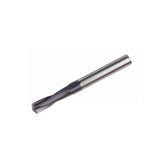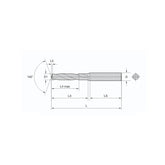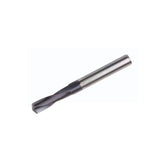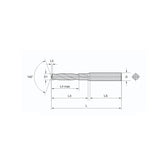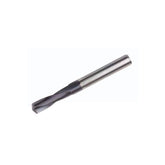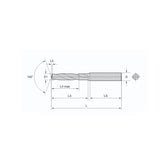Take You Closer to Carbide Drill Bits
Rather Break than Bend: Solid Carbide Drills
Solid carbide drills are undoubtedly familiar to anyone involved in dry machining. During mass production, they are widely used for stepped holes, holes requiring high surface quality (internal surface finish), or tap drill holes. The purpose is to reduce downtime caused by tool changes, improve dimensional stability of machined parts, and increase machining speeds. Of course, even more expensive options like PCD-tipped drills are also available.
Superior Hot Hardness
Enables high-speed cutting and extends tool life
Higher Rigidity
Reduces hole deviation and improves precision
High Efficiency
Reduces processing time significantly
Compared to Conventional High-Speed Steel (HSS) Drills:
- Superior hot hardness - Enables high-speed cutting and significantly extends tool life
- Higher tool rigidity - Suppresses hole deviation and enlargement during machining, achieving high-precision drilling
- Better resistance to material adhesion - Effectively prevents built-up edge formation and improves surface quality
- Higher machining efficiency - Reduces processing time
Disadvantages:
Brittleness - Prone to fracture when improperly used. Requires proper handling and machining parameters
Tool Holding System:
For drilling systems, not only the drill itself but all system components affect hole quality.
Recommended Tool Holders:
- First choice: Hydraulic chucks
- Second choice: Heat-shrink chucks
- Third choice: Power chucks
Note: These options are expensive. For holes with lower precision requirements, standard clamping methods may be acceptable - machining ultimately involves balancing precision against cost control.
Hydraulic chucks are recommended due to their secure torque transmission and excellent concentricity.
Drill chucks are not recommended as they cannot absorb cutting forces and often cause concentricity inaccuracies.
Machining Sequence:
Drill before chamfering.
Workpiece Hardness:
Since solid carbide drills have higher penetration rates, the workpiece must be sufficiently hard to withstand this.
Coolant Requirements:
To optimize performance, drills must be adequately cooled during operation. Proper coolant selection extends tool life and improves machining efficiency. Insufficient cooling causes rapid temperature rise, leading to hole enlargement (thermal expansion). For deep-hole drilling, internal coolant drills are essential - higher coolant pressure delivers better results.
Usage on Lathes:
The drill must be centered within 0.025mm tolerance. Never drill over existing holes or burrs.
Drilling on Sloped or Curved Surfaces:
When drilling curved surfaces, use lower feed rates than for flat surfaces. The required feed reduction depends on the workpiece's slope angle.
Get detailed technical drawings and specifications
